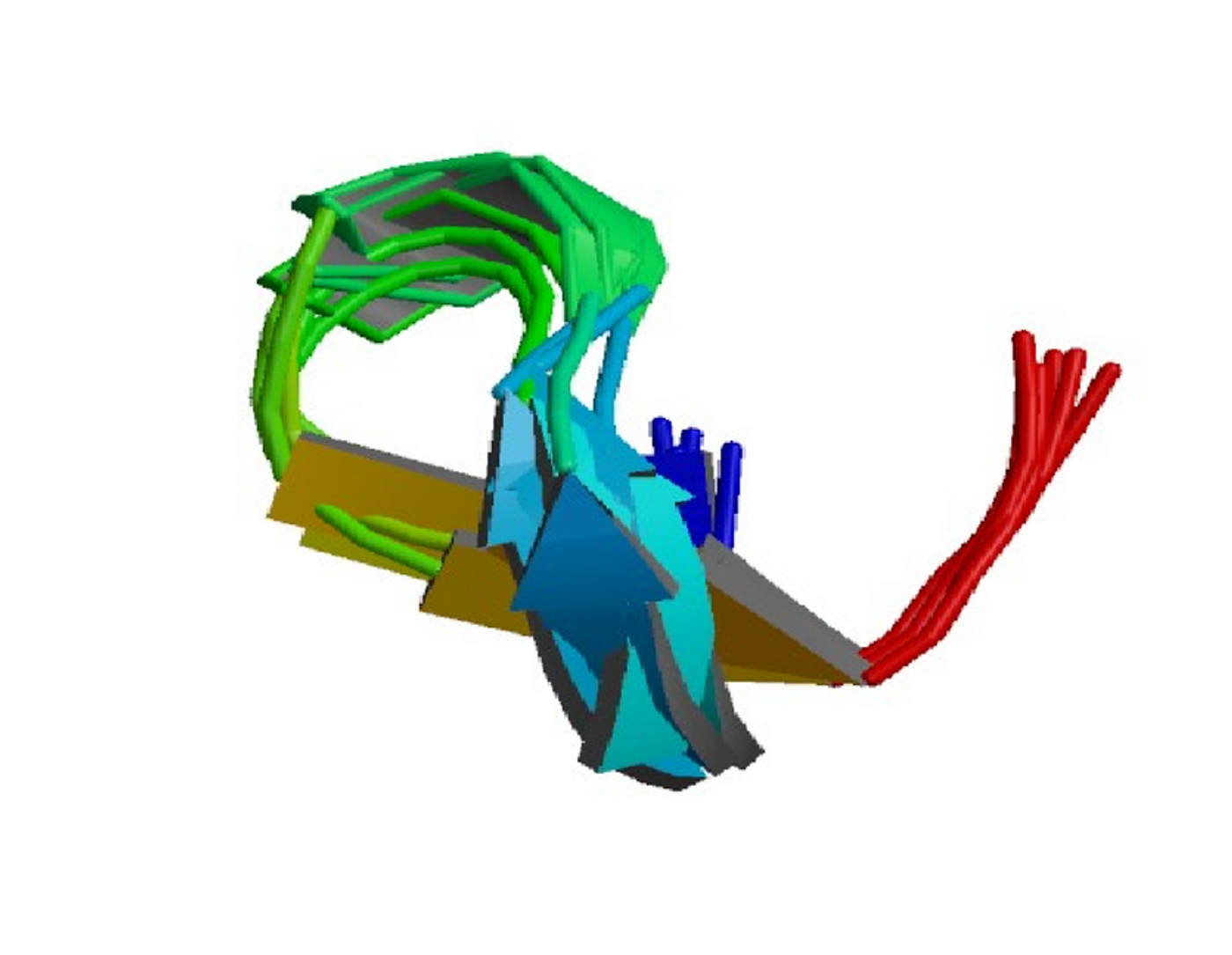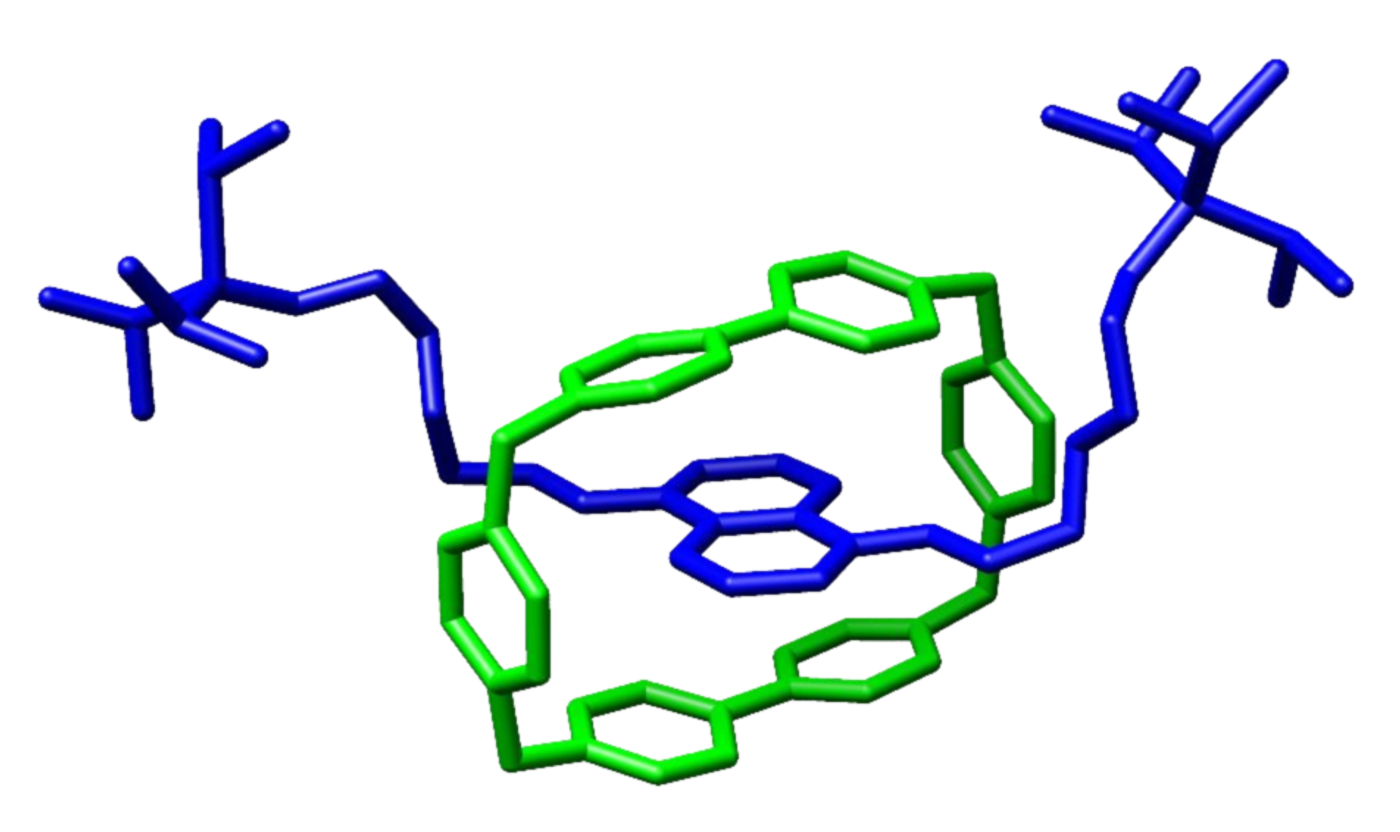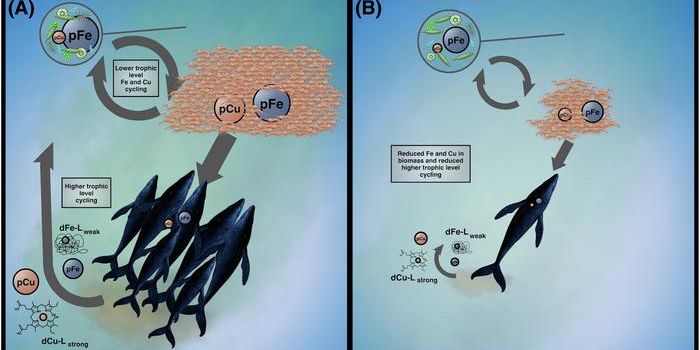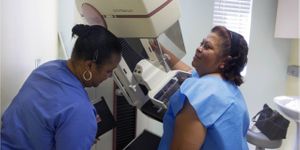This Lasso-like Peptide is Nature's Tinniest Switch
The lasso peptide Benenodin-1. Credit: RCSB
The 2016 Nobel Prize in Chemistry honored three esteemed scientists in the field nanotechnology for their contribution of synthetic molecular machines. Molecular machines, the assemblies of molecular components that produce mechanical movements in response to specific stimuli, are common in nature. The most complex molecular machines are proteins found within cells. These include motor proteins, such as myosin, kinesin, dynein, and transmembrane ATPases. The structure and working mechanism of these proteins are far more sophisticated than any artificial molecular machine so far.
While exploring the DNAs of a soil proteobacterium known as Asticcacaulis benevestitus, a team of Princeton University researchers stumbled upon a lasso-shaped bacterium-derive peptide that alters its configuration when exposed to heat. It belongs to a family of peptides called the “lasso peptides”. They all have an N-terminal macrolactam macrocycle ring, through which a linear C-terminal tail is threaded. This unique threaded-loop structure earned them their name.
Thermal unthreading of the Lasso Peptides Astexin-2 and Astexin-3.
Credit: Allen et al., 2016/ACS Chemical Biology
Most lasso peptides undergo a conformational change when exposed to heat, eventually resulting in the tail slipping out of the ring and the peptide losing the “lasso” feature. But what is unique about benenodin-1, the peptide isolated from A. benevestitus, is that even though the peptide changed configuration, it never becomes unthreaded.
The team, led by A. James Link associate professor of chemical and biological engineering at Princeton, has long been searching for inspiration from nature to construct nanoscale molecular machines. Instead of using the purely synthetic components, they went after naturally existing peptides and proteins. "The discovery of this lasso peptide, which we named benenodin-1, demonstrates that we might look to biology as well as engineering for source material in developing molecular devices," said Link.
The structure of a rotaxane molecule. Credit: Wikipedia
Commenting on the uniqueness of benenodin-1 as a lasso peptide, Link admitted that the ability to change shape without unthreading is intriguing. Since both conformations, before and after heat exposure, maintain the rotaxane structure, it is the first example of switchable, mechanically interlocked molecule found in nature. (Rotaxane, a mechanically interlocked molecule with ring-and-rod architecture, is an early generation molecular machine developed by Nobel Laureate Sir J. Fraser Stoddart's. Held together by its mechanical bonds, the lasso peptides are structurally resembling rotaxanes.)
About the direction of the next step research, the Princeton team is attempting to put the switching property of benenodin-1 to test in practical applications, such as binding metal pollutants to help with environmental cleanup.










